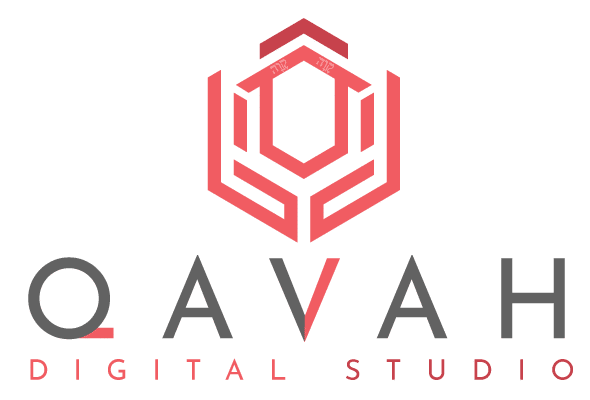The success of an email marketing campaign doesn’t depend solely on the content or the offer being presented. One of the most crucial factors to maximize open and conversion rates is timing: the exact moment when recipients receive your message. Whether you’re launching a B2B or B2C campaign, knowing when your audience is most receptive can make a big difference. In this article, we’ll explore the best days and times to send emails, how to adjust the timing based on your goal, and why the optimal moment varies depending on the country, product, and type of audience.
Additionally, understanding your audience’s behavior and how they interact with emails throughout the week or day is key. Although there are general trends, true success lies in customizing your sends based on the unique aspects of each campaign and customer type. Let’s dive deeper into how to define the best time to send effective emails.
Why Timing Is Key in Email Marketing?
Timing in an email marketing campaign is crucial because it directly affects open, click, and conversion rates. An email sent at the right time is much more likely to be seen and acted upon. Conversely, an email that arrives at an inconvenient time, like the end of a workday or during sleeping hours, may get lost among other messages or ignored entirely. It’s essential to understand the habits and routines of your audience to maximize the impact of your emails.
You may also be interested in: how do subdomains affect seo?
Additionally, time plays a critical role in how users prioritize their inbox. The early hours of the morning are often a high-focus time for checking emails, while the afternoon might be a good time to catch people looking for a break in their day. Therefore, sending emails at the right moment can be the difference between conversion success or being relegated to the background.
Factors That Influence the Effectiveness of Send Times
One of the most important factors is the target audience. B2B recipients (businesses) usually check their emails during work hours, while B2C recipients (individual consumers) are more likely to engage with emails during their free time, such as afternoons or weekends. Furthermore, the digital behavior of the audience, such as mobile or desktop usage, influences when they are most likely to check their emails and act accordingly.
Another relevant factor is the industry you’re in. For example, in sectors like retail or e-commerce, emails are often more effective over the weekend when consumers have more time to shop online. In contrast, for tech or finance companies, the best days to send emails tend to be midweek during business hours. These details should be considered when determining the exact time to send each campaign.
What Time Is Best to Send Email Marketing?
Generally, studies show that the best times to send marketing emails tend to be mid-morning, specifically between 10:00 AM and 11:00 AM, when people are focused but not overwhelmed with tasks. Another optimal time is between 2:00 PM and 3:00 PM, right after the lunch break, when users return to check their emails before finishing the day.
However, these times can vary depending on the audience. If your target audience is in different time zones, you’ll need to adjust your sends to hit key hours in each location. It’s also essential to consider the type of email you’re sending; for example, promotional emails might perform better on weekends, while important or informative communications tend to succeed more during weekdays.
Best Days and Times to Send Emails (General Data)
Statistically, the best days to send emails are typically Tuesdays and Thursdays. These days, users are in the middle of the workweek, less busy than on Monday, but still focused on their tasks. Wednesday can also be a good day, although it doesn’t always have the same impact. Avoiding Mondays and Fridays can be beneficial, as Monday is often packed with pending tasks, and Friday is marked by the proximity of the weekend, reducing attention.
Regarding hours, in addition to the mentioned time slots, some studies suggest that sending emails between 8:00 PM and 9:00 PM can work well in certain B2C sectors. At this time, users are more relaxed at home and can dedicate more time to checking emails. However, it’s always ideal to test and confirm the best times for your specific audience.
How Purpose Defines the Best Time?
The purpose of the email is key to defining the best time to send it. If it’s a promotional email or an offer, weekends might be more effective, as consumers have more free time to make purchases. On the other hand, if the email has a more informative or customer relationship focus (such as product updates or news), weekdays in the late morning or early afternoon usually generate better open rates.
If the goal is to create urgency with limited-time offers, sending the email at peak activity times, like the morning or after lunch, can increase the likelihood of conversion. In summary, aligning the email’s purpose with the right time significantly enhances the effectiveness of the campaign.
Impact of Country and Time Zone on Email Marketing Effectiveness
Sending emails in the wrong time zones can negatively affect open and click rates. For example, if your business operates globally, it’s crucial to consider time zone differences to optimize delivery. An email sent at 10:00 AM in one region might arrive outside working hours in another, reducing the likelihood of interaction.
It’s essential to use automation tools that allow emails to be scheduled based on the recipient’s local time. Additionally, consider cultural factors that may influence digital behavior in different countries. Some regions prefer to receive emails at specific times of the day or week, and adjusting to these habits can significantly improve results.
Adapting Sends Based on Product or Service
The type of product or service you’re promoting also affects the best time to send emails. For example, fashion retailers may have more success sending promotional emails over the weekend when customers have more time to browse and shop. Conversely, financial services might see better results during the week when recipients are in “work mode” and more open to offers or updates related to their finances.
Likewise, highly seasonal products may benefit from being sent at specific times of the year or during key events. For instance, during the holidays, emails sent early in the morning may capture shoppers before they become overwhelmed with promotions. It’s essential to understand not only customer behavior but also how it varies based on the product type.
B2B vs. B2C: Are There Differences in the Best Time to Send Emails?
For B2B companies, the best time to send emails tends to be during the workweek, especially between Tuesday and Thursday. Optimal hours are typically around 10:00 AM and 2:00 PM when professionals are actively working through their emails and tasks. In this case, weekends are generally ineffective since people tend to disconnect from work.
In B2C, timing can vary more. Companies targeting individual consumers may find success sending emails in the evening or over the weekend when users are more relaxed and willing to browse offers or newsletters. It’s important to segment and perform A/B tests to find the best timing depending on the nature of the product and customer behavior.
The Role of Automation Tools in Personalized Sending
Marketing automation tools are essential for personalizing sends and ensuring that emails reach the recipient at the optimal time. These platforms allow you to segment users not only by behavior but also by location and preferences, adjusting the send to the correct time zone.
With this technology, you can send the same email to different audiences at the times when they’re most likely to open and engage with it.
Moreover, automation platforms can track user behavior to learn when they’re most likely to engage with your emails. This way, you can optimize future sends based on concrete data and continuously improve the performance of your email marketing campaigns.
Tools and Tactics to Find the Best Time for Your Audience
One of the best ways to find the optimal time is to conduct A/B tests in your email marketing campaigns. By sending emails at different times and days, you can compare open and click rates to determine what works best for your specific audience. Tools like Mailchimp, HubSpot, or Mailerlite offer these features and allow you to analyze results in detail.
Another useful tactic is to review the historical metrics of your previous campaigns. By analyzing when your emails have been most successful, you can identify patterns in your audience’s behavior. Additionally, you can complement this analysis with industry studies and data to align your sends with proven trends.
The Importance of Experimentation and Personalization
Timing in email marketing isn’t an exact science, but it’s a crucial factor for the success of your campaigns. While there are general trends and recommendations, it’s essential for each business to constantly test to discover what moments work best for their specific audience and sector. Adapting the sending time to match your target audience’s behavior is one of the best ways to increase open, click, and conversion rates.
Finally, personalization doesn’t just refer to the email’s content but also to when you send it. Leveraging automation tools and performing detailed data analysis will allow you to optimize your campaigns, achieving a greater and longer-lasting impact on your audience. Remember, every audience is unique, and experimentation is key to achieving the best results.








